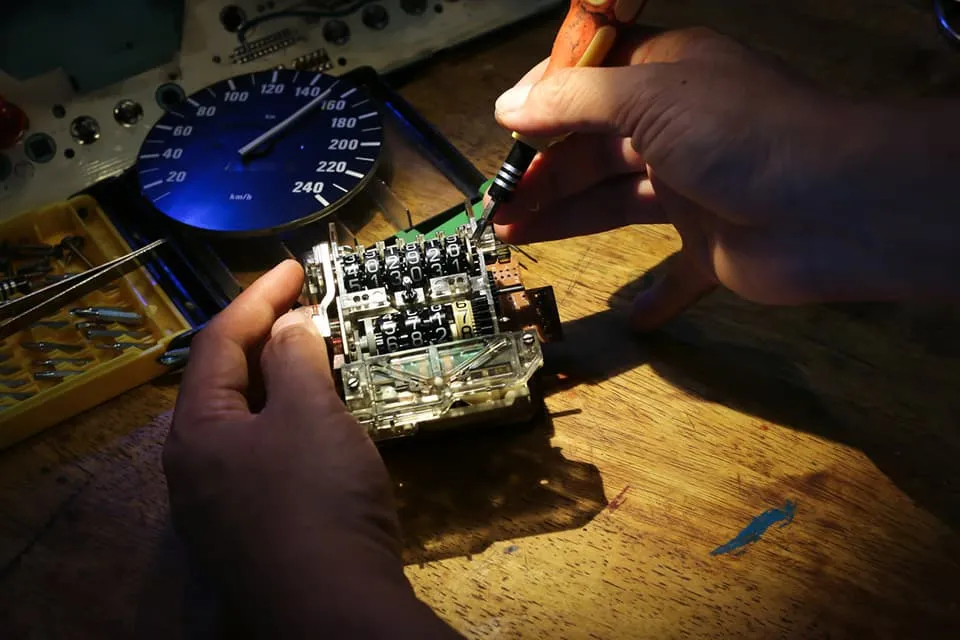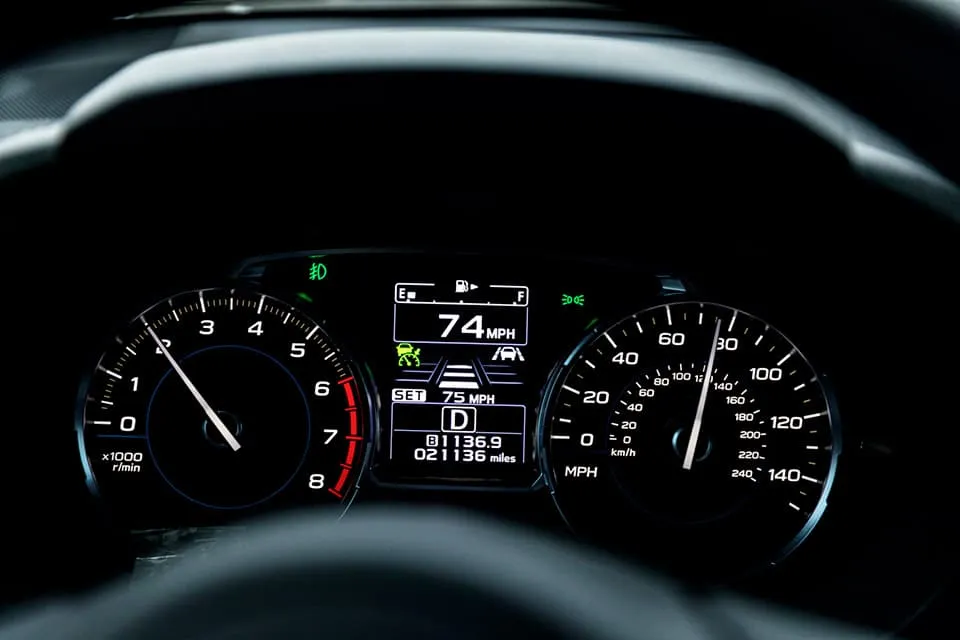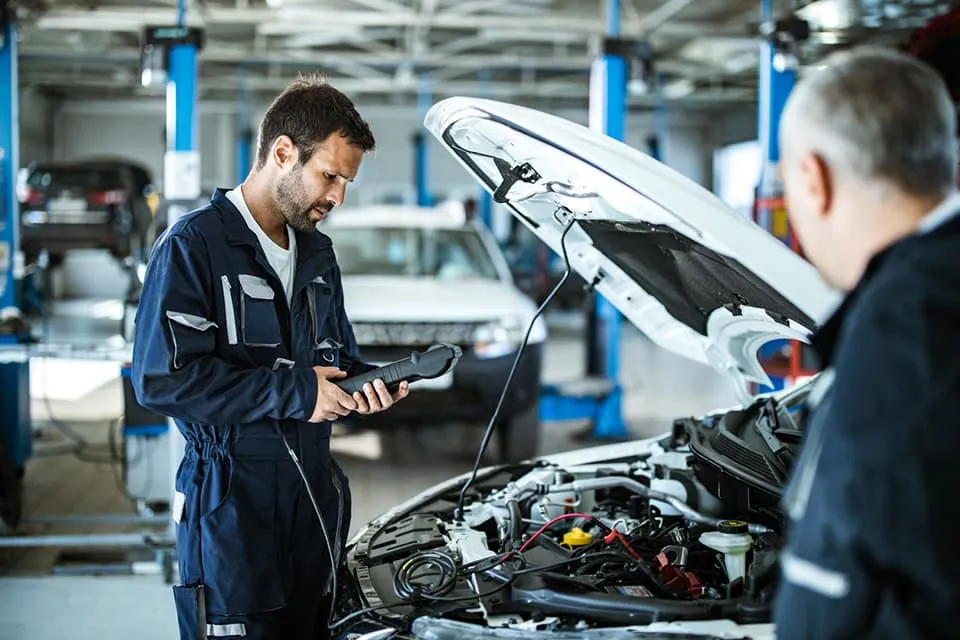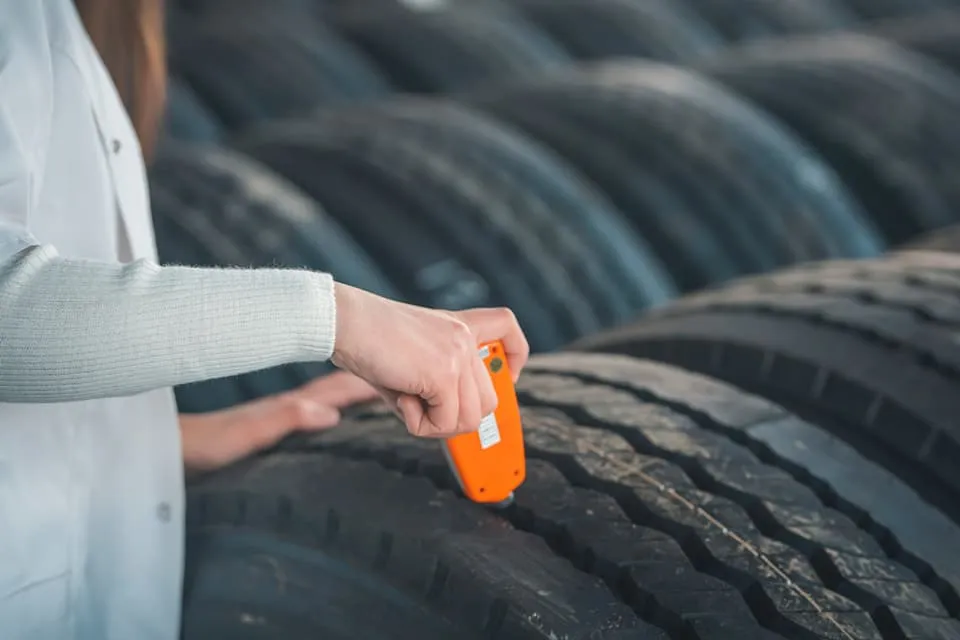How to Check a Used Car For an Odometer Rollback?

Correct vehicle mileage is essential when determining the value of a used car, but can you trust the number on the dash? High mileage cars have far more wear and tear, and unscrupulous dealers will hide the actual amount to artificially increase a car's value. This type of fraud hides the real mileage of a car, which can lead buyers to overpay for a vehicle that’s far more worn than it appears. This trick is called "odometer rollback".
What Does Odometer Rollback Mean?
A form of vehicle tampering, odometer rollback involves adjusting the mileage readout to lower the car's apparent mileage. The odometer measures how many miles your vehicle travels, usually by counting the wheel rotations and comparing that number against the tire's circumference. This calculation results in the number of miles the car has traveled, which appears on the display.
Odometer fraud can be dangerous: Unknowingly driving a high-mileage car can result in disaster. These vehicles can have decaying internal systems, and they may fail during travel. Equipment failure on the road could mean being stranded or injured and likely incur expensive emergency repairs.
So how does an odometer rollback work? The method for rolling back a car's odometer depends on whether the device is mechanical, a physical dial of printed rotating numbers, or digital, a small electronic readout screen displaying the car's mileage.
How To Change Mileage On a Car?
Contrary to what characters believe in movies like "Ferris Bueller's Day Off", putting the car in reverse will not roll the odometer back. To accomplish this act of fraud, scammers have different methods depending on whether the odometer is mechanical or digital.
Mechanical Odometer Rollback
For older models of cars, mechanical odometers are the standard equipment to display mileage. To roll back the mechanical odometer, the scammer would need a certain amount of mechanical knowledge. In fact, these can be more difficult to change than their digital counterparts. Changing mileage of the mechanical odometer involves several steps, including:
- Removing the dash panel to access the odometer.
- Disassembling the odometer.
- Rolling back the dials manually.
- Reassembling the odometer and dash.
Can You Roll Back a Digital Odometer?

While the mechanic rollback requires mechanical knowledge, a digital odometer rollback requires a skill for programming. While a replacement of the memory chip can reduce the mileage to zero, this is incredibly suspicious. Instead, most scammers choose a specific mileage and hack the odometer to display that number. While no disassembly is required, there are several steps these scammers follow to change the mileage on a car:
- Access the car's computer port
- Reprogram the odometer with the intended mileage
- Restart the system so it displays that mileage
- Remove associated devices from port
Odometer Replacement
A rather uninspired method of rollback, some scammers choose to simply replace the odometer completely. By finding the same make and model of vehicle, often from a junkyard, these criminals will find an odometer that has rolled over to a lower mileage and install it in the car they intend to sell. While a seemingly easy way to accomplish this odometer fraud, finding the same car with lower mileage can be difficult or even impossible.
How To Tell If Odometer
Has Been Rolled Back?
You're looking at your new used car, and you feel a twinge of suspicion. Maybe the price was too reasonable, the salesperson too friendly, or maybe you just have a hunch. So how to know if the odometer is tampered?
Again, it boils down to what kind of odometer your car has. For the mechanical, you want to look for physical signs of tampering. These can include:
- Fingerprints, usually around or under the display.
- Loose panels or screws
- Scratch marks or other evidence of tool-use.
- Crooked numbers.
- Uneven dial spacing.
- The odometer functions abnormally, or not at all.
An excellent way to test the car is to take it for a drive and observe how the odometer functions. If you notice the dial moving slowly or different dials flipping when they shouldn't, it may be time to contact that used-car dealer.
If the car has a digital mileage readout, it can be a bit more challenging to detect interference. Check your vehicle history report and see if the mileage matches the paperwork. You can also look at the computer port to see if it has recently been used, but again this can be hard to determine. The best choice you can make is to have a professional look at the car before finalizing your purchase. They can evaluate mileage and wear-and-tear present on the vehicle and tell you whether the reported mileage is in the correct ballpark.
How To Avoid Buying a Used Car With a Rolled-Over Odometer?
Scammers have numerous ways of selling a tainted car, so it's best to take precautions. Here are several steps you can take to prevent odometer fraud and other forms of car sale fraud.
Have A Mechanic Check The Car

As said before, the best choice is to have a professional check out the car. Taking the vehicle in may not be possible with some sales, but if you can, this will 100% confirm the physical status of the car. Mechanics are trained to spot damaged or tampered-with parts and can check every vehicle system for signs of high mileage to determine the car's mechanical age. In addition, they can tell whether the vehicle has regularly had its oil changed, how recently certain parts were repaired, and most importantly, whether a scammer is trying to take you for a ride by hiding the real mileage of the car.
Check All Associated Documents
Make sure to thoroughly check through anything related to the car before the sale. One of the most essential items is the title. A car's title is a document indicating who owns the car and is necessary to legally prove ownership. This document is also different from a registration, which shows that you are up-to-date on any fees and taxes related to car ownership. Do not accept a copy of a title; a copy is much easier to fake than an original, which can be red flag for potential odometer fraud.
Run A VIN Check
The vehicle identification number, or VIN, is a 17-digit identifying code assigned to each registered car, truck, or trailer. Every code is unique and assigned to only that specific vehicle. Performing a VIN check can verify the car's number, assist in checking a car’s real mileage and make sure it matches the paperwork accompanying your sale. A VIN check can also tell you whether the vehicle has been salvaged or branded. This will let you know if the car has been declared totaled due to an accident, natural disaster, or other event. Our vehicle history reports have title records that show odometer readings throughout the life of the car, helping you with checking a car’s real mileage before making a purchase. Our records also include sales history so you can determine the real mileage of the car. You can quickly and easily run a comprehensive VIN check with GoodCar.
6 Areas To Check Before Buying A Used Car
If the scam-avoidance methods above aren't available or affordable, there are some checks you can conduct yourself with the right know-how. Here are six systems you can personally inspect to look for any signs of foul play.
Odometer
For rollback specifically, the odometer may be the only visible issue. Visible cues like fingerprints, cracked plastic, or unusual function are clear indicators of tampering. If possible, search online for photos of the odometer in the car you want to buy. Compare the look of the factory odometer to the one in the car, and see if you can spot any abnormalities.
Steering Wheel
Steering wheels are one of the most handled surfaces in a car and can easily indicate age. The top layer of material will inevitably wear down, and any coverings will leave some permanent mark. So if a supposedly low-mileage car has a worn-away steering wheel, take that as a big red flag.
Pedals
Second only to the steering wheel, pedals are the recipients of significant wear over time. The driver's side pedals are an excellent area to check on a used car, as this is the most commonly used side in any vehicle. If the gas and break look incredibly worn, but the odometer is reading a low number, you may want to avoid finalizing the purchase.
Tires

Depending on the quality, tires will last for different amounts of time, usually anywhere from 30,000 to 80,000 miles. You can find the exact number by checking the tire's uniform tire quality grade (UTQG), also known as its treadwear grade. These are stamped on the tires' sidewalls and appear as the "treadwear" followed by a three-digit number.
By checking the treadwear grade, as well as the depth of the car's tire treads, you can get an exact determination of how much wear the tires have experienced. If the tires look like they've seen 75,000 miles, but the odometer says 25,000, you should let the seller know the jig is up.
Seats
Getting in and out of car seats causes material degradation, and old car seats are easy to spot. If the seat looks sunken from the weight of a driver, worn down and faded in color, or if the seat is difficult to adjust, this can indicate a high-mileage car. Seats are one of the least replaced parts and can often be a common red flag in odometer fraud.
Inspection Stickers
Whenever a person gets an oil change, inspection, part replacement, or any other alteration, they generally receive a receipt or sticker detailing the repair. Find the last service date listed in the seller's paperwork, and compare that to any stickers or receipts you find. If the two documents do not match, you may have narrowly avoided a scam.
How To Avoid Car Scams
The best way to avoid a vehicle scam is to do extensive research. Purchasing a used car can be a great way to save money, and the right tools can help you find a long-lasting, reliable vehicle. While bringing a car to a mechanic before you've bought it would be ideal, it's not always realistic.
A better option is to find a first-rate vehicle research tool to verify the purchase for you. GoodCar can save you time and money, and give you all the information you need before considering a specific vehicle. That way, you can avoid scams like odometer fraud before they affect your wallet or your well being. Knowing the real mileage of a car helps you make an informed decision and avoid vehicles with hidden wear and tear.
FREE Vehicle Search
- Accidents
- Problem Checks
- Title Records
- Recalls
- Values
- Specs
-
InfoPay, Inc. (dba GoodCar) is an Approved NMVTIS Data Provider
-
-






























